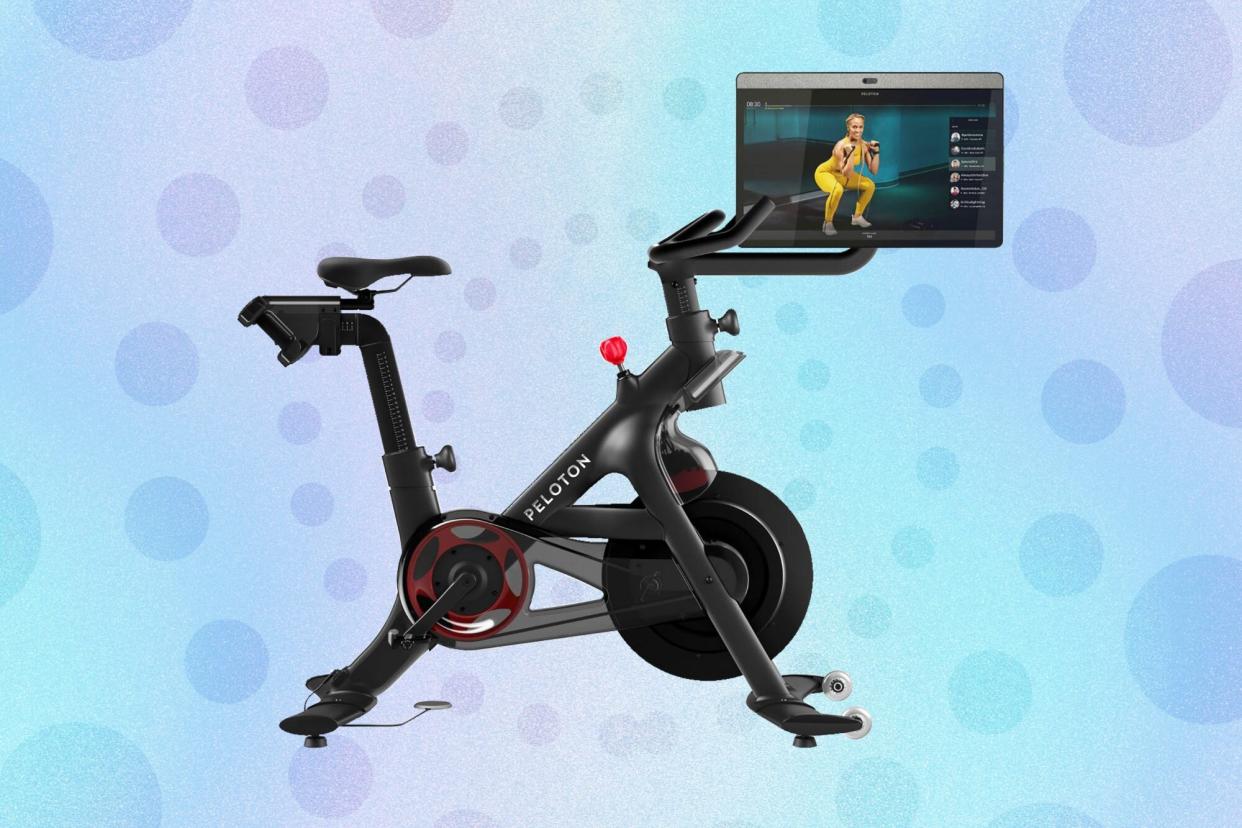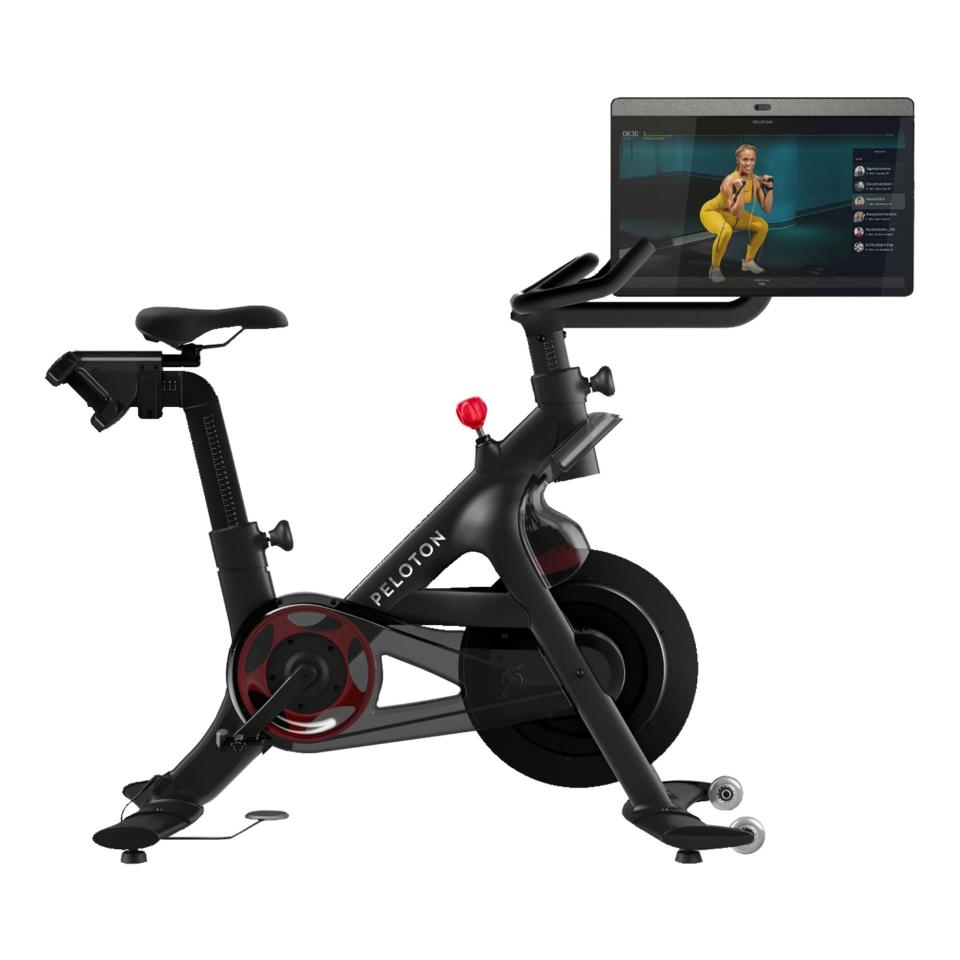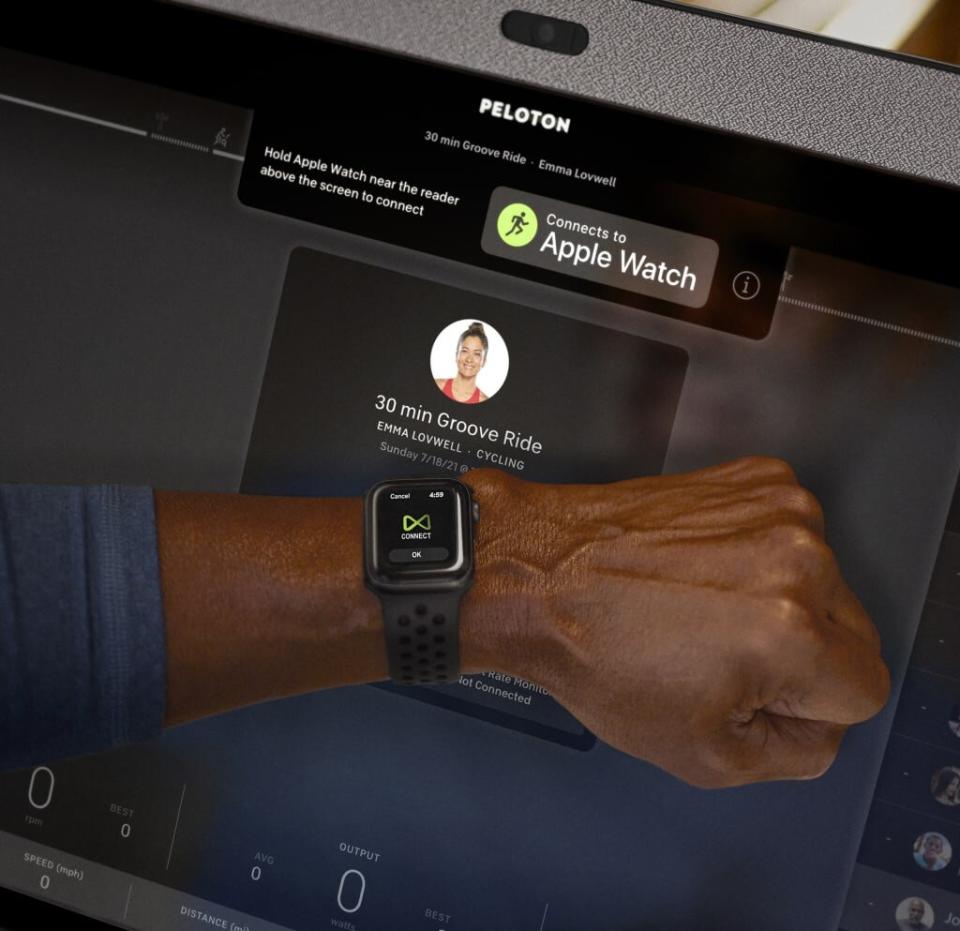The Peloton Bike+ Really Is Every Rider's Dream Come True

Peloton
About five months into the actual dumpster fire that was 2020, I signed up for a free trial of the Peloton app. We were eight weeks into a mandated lockdown in the Bay Area, and as a fitness class junkie, I was going more than a little stir crazy without the comfort, community, and encouragement of my awesome instructors and fellow classmates.
My boyfriend and I were sharing the cramped quarters of his one-bedroom apartment, so there certainly wasn't space for any gym equipment, but my sister tipped me off to the fact that Peloton was not only offering a three-month free trial to all new members at that time but that the platform offered a slew of classes such as cardio, strength, and outdoor runs that didn't require any of the brand's large fitness equipment.
Needless to say, I downloaded the app and quickly fell deep into the Peloton universe. Fast-forward, and now more than a year and a half later, I can pretty much answer any question anyone has about anything Peloton-related.
But while I was a total sucker for all the classes, instructors, and even the merch, after a few months of non-equipment modalities, the FOMO I was experiencing over all those missed bike workouts was real. (Related: The Best Peloton Instructor to Match Your Workout Style)
I initially dipped my toe into the cycling waters by forcing my poor boyfriend to prop up his road bike on an indoor trainer — the ultimate irony considering I, a lifelong indoors kid, can't even really ride a bicycle outside all that well. My first two classes (Tunde Oyeneyin and Alex Toussaint's 30 min Beyoncé Two for One Ride and Robin Arzón's iconic pregnancy announcement class) got me hooked. But the experience also made me realize that the road bike would not do.
In an eternal attempt to pinch pennies, I bought a Schwinn ic4 and dove deep into Facebook groups, Reddit threads, and more, figuring out how to calibrate my bike to the Peloton app for an authentic-ish experience. The hack worked fine (with a third-party cycling app such as Kinetic, you can actually track your pedaling cadence on almost any bike), but it wasn't the real deal. So when Peloton generously offered to let me try their newest model — the Peloton Bike+ — I jumped at the chance! (Related: The Best Peloton Bike Alternatives On Amazon, According to Reviews)
Now, a month into my Peloton Bike+ journey, I can say with certainty that there is no going back.
The first thing you'll notice about Peloton equipment is how — to put it simply — nice it is. The construction of the Peloton Bike+ is sleek, sturdy, and just looks elegant. And while aesthetics absolutely don't guarantee a great fitness experience, the beauty of the Peloton Bike+ definitely translates to its functionality.
For diehard Peloton devotees such as myself, the design of the Peloton Bike+ just makes sense, and that's not necessarily the case with knockoffs. If you're a fan of Intervals and Arms classes, for example, having those light dumbbells sit directly below the saddle is an invaluable convenience (they were inexplicably located below the handlebars on my former bike, which made transitions anything but smooth). The water bottle holders on the Peloton Bike+ are also mercifully out of knee-knocking range (another weird design snafu common on other models) and the handlebars feel ergonomically fit for a smoother, more well-aligned ride.

And let's talk about that touchscreen, shall we? After spending so long staring at my favorite instructors' faces through my tiny iPhone, I didn't realize the kind of up-close-and-personal experience I was missing out on. Having now seen the light, I can tell you that the 24" rotating screen (yes — the screen rotates on the Peloton Bike+ model so you can easily pivot for strength, Pilates, yoga, and more on a nearby mat) makes a world of difference. The picture quality and size are so good, you can't help but feel like you're in the studio riding along with your favorite coach slash hero. Plus, the four-speaker sound system is a major acoustic upgrade. (You will wonder why you ever listened to Kendall Toole's pop-punk playlists or Cody Rigsby's Britney Spears medleys any other way.)
Another major benefit of the Peloton Bike+ for many exercisers is the wide array of stats and tracking tools. If you use Apple Gymkit, you can pair your Apple Watch with Peloton Bike+ to sync metrics such as heart rate and calories, and the touchscreen itself displays everything from your cadence and resistance to your caloric burn and total output for the ride (i.e. how much work you've done — a calculation based on your cadence and resistance together). For someone like myself who has a complicated relationship to numbers, I was worried all of these stats and figures would be distracting, at best, or triggering, at worst. But the Peloton Bike+ makes it easy to simply tap the sections with data on your screen that aren't useful or desired for you, so those elements temporarily disappear. I personally hide my leaderboard during every ride, but some people love the competitive aspect of the experience.

As my girl Jess Sims loves to say, the leaderboard is meant to be "competition to uplift, never to destroy," so if you, like me, would prefer not to know where you rank in comparison to your fellow riders, you can tap the screen and make it go 'poof!' However, your calories, output, and leaderboard ranking will pop up at the end of each ride.
Another feature of the Bike+ that's truly distinct from other models is called "auto-follow." This touch-free optional adjustment automatically scales your resistance based on the target metrics the instructor calls out. Throughout the class, the digitally controlled resistance remembers where you fall within the range and learns your preferences so it can automatically adjust when it's time. So, for example, if Emma Lovewell calls out a cadence push of 100-120 at a resistance of 40-50 followed by a climb of 50-60 cadence at a 50-60 resistance (yikes), you can set the auto-follow feature and it will automatically put you in the midrange of those resistance metrics, so you don't have to turn the knob between efforts. (To be clear, it cannot make your legs pedal faster, so you'll have to hit those cadence numbers yourself.) I personally love this feature because, for some twisted reason, I can motivate myself to get through a brutal 45-minute HIIT and Hills ride, but am somehow too lazy to turn the resistance knob two millimeters to the right.
If you are transitioning to the Peloton Bike+ from another indoor cycling bike, you should be aware that the Peloton models use delta-compatible aluminum bike pedals, not pedals compatible with SPD cleats. My Schwinn had SPD-compatible pedals and toe cages (which act as an alternative to clipping in if you want to feel secure to the pedal but wear regular sneakers, for example), so clipping into the delta-compatible pedals took some getting used to — and a new pair of cycling shoes. (Related: The Complete Guide to Peloton Cycling Shoes)
As a self-declared expert on all things Peloton, and as someone who's extra price-conscious, I have to say — the $2,495 price tag on the Peloton Bike+ is totally worth it. Yes, this is a pricey piece of machinery, and it may not be a must-buy if you're dabbling in a variety of different workouts. But if you're truly immersed in the Peloton world and want the full, comprehensive, all-out experience, you won't regret going with the Peloton Bike+. Now your biggest problem will be figuring out which outfit from the new Peloton Apparel line goes best with your cute bike.
